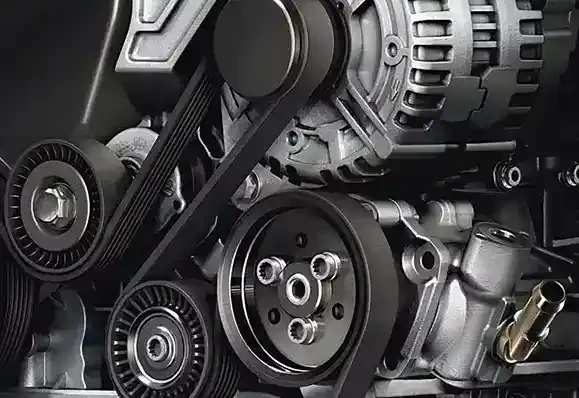- Arabic
- French
- Russian
- Spanish
- Portuguese
- Turkish
- Armenian
- English
- Albanian
- Amharic
- Azerbaijani
- Basque
- Belarusian
- Bengali
- Bosnian
- Bulgarian
- Catalan
- Cebuano
- Corsican
- Croatian
- Czech
- Danish
- Dutch
- Afrikaans
- Esperanto
- Estonian
- Finnish
- Frisian
- Galician
- Georgian
- German
- Greek
- Gujarati
- Haitian Creole
- hausa
- hawaiian
- Hebrew
- Hindi
- Miao
- Hungarian
- Icelandic
- igbo
- Indonesian
- irish
- Italian
- Japanese
- Javanese
- Kannada
- kazakh
- Khmer
- Rwandese
- Korean
- Kurdish
- Kyrgyz
- Lao
- Latin
- Latvian
- Lithuanian
- Luxembourgish
- Macedonian
- Malgashi
- Malay
- Malayalam
- Maltese
- Maori
- Marathi
- Mongolian
- Myanmar
- Nepali
- Norwegian
- Norwegian
- Occitan
- Pashto
- Persian
- Polish
- Punjabi
- Romanian
- Samoan
- Scottish Gaelic
- Serbian
- Sesotho
- Shona
- Sindhi
- Sinhala
- Slovak
- Slovenian
- Somali
- Sundanese
- Swahili
- Swedish
- Tagalog
- Tajik
- Tamil
- Tatar
- Telugu
- Thai
- Turkmen
- Ukrainian
- Urdu
- Uighur
- Uzbek
- Vietnamese
- Welsh
- Bantu
- Yiddish
- Yoruba
- Zulu
नोभ . 05, 2024 09:57 Back to list
engine belt
The Importance of Engine Belts in Automotive Engineering
In the intricate world of automotive engineering, every component plays a vital role in ensuring the efficiency, performance, and longevity of a vehicle. Among these components, engine belts are crucial yet often overlooked elements that serve fundamental functions. Engine belts, including the timing belt, serpentine belt, and V-belt, contribute significantly to the smooth operation of modern engines. Understanding their roles, types, and maintenance can help vehicle owners appreciate their importance and prevent potential engine problems.
Types of Engine Belts
1. Timing Belt The timing belt is perhaps the most critical engine belt in vehicles with internal combustion engines. It synchronizes the rotation of the crankshaft and the camshaft, ensuring that the engine's valves open and close at the appropriate times during the intake and exhaust strokes. A well-maintained timing belt is essential to prevent catastrophic engine failure. If it breaks, it can cause severe damage to the engine components, particularly in interference engines, where the pistons and valves occupy the same space.
2. Serpentine Belt The serpentine belt is a long, continuous belt that drives multiple peripheral devices in the engine, such as the alternator, power steering pump, water pump, and air conditioning compressor. This single belt design simplifies the engine layout and reduces weight compared to older systems that utilized multiple belts. The serpentine belt is designed to last; however, it is subject to wear and tear due to heat, friction, and environmental factors, thus requiring regular inspection and maintenance.
3. V-Belt V-belts, characterized by their trapezoidal shape, were widely used in older vehicles before the introduction of serpentine belts. While they have largely been phased out in modern designs, many older cars still utilize them. They provide power to accessories and can be replaced individually, allowing for specific repairs without requiring the replacement of multiple belts.
The Functional Importance of Engine Belts
Engine belts are fundamental to the overall performance of a vehicle. They facilitate the operation of various engine components, contributing to
- Efficient Power Distribution Belts ensure that power generated by the engine is effectively distributed to components that require it, such as the alternator and water pump.
engine belt

- Engine Timing The timing belt's precise synchronization of the crankshaft and camshaft is crucial for the optimal performance of the engine. Any deviation in timing can lead to performance issues or complete engine failure.
- Cooling and Charging The serpentine belt drives the water pump, facilitating engine cooling, and powers the alternator, which charges the vehicle's battery. A malfunctioning belt can lead to overheating or battery failure, resulting in a breakdown.
Maintenance and Signs of Wear
Maintaining engine belts is essential to ensure their longevity and the reliable running of the vehicle. It is advisable to follow the manufacturer's recommendations for inspection and replacement intervals. Generally, timing belts should be replaced every 60,000 to 100,000 miles, while serpentine belts may last between 50,000 to 100,000 miles, depending on driving conditions.
Drivers should be vigilant for signs of wear, including
- Cracks or fraying Visible cracks on the surface of the belts indicate deterioration. - Squealing noises A squealing sound when starting the engine or while driving may suggest that a belt is slipping or has become loose. - High engine temperature Overheating could signal a failing water pump due to a malfunctioning serpentine belt. - Battery warning light An illuminated battery warning light may indicate issues with the alternator, which could be related to the serpentine belt.
Conclusion
Engine belts may seem like simple components, but their roles are integral to a vehicle's functionality and safety. Regular maintenance and timely replacement can prevent costly repairs and extend the vehicle's lifespan. Understanding the importance of engine belts empowers vehicle owners to take proactive steps in vehicle maintenance, ensuring a smooth and reliable driving experience. In the ever-evolving landscape of automotive technology, recognizing the critical components, such as engine belts, continues to be vital for both manufacturers and drivers alike.
-
Korean Auto Parts Timing Belt 24312-37500 For Hyundai/Kia
NewsMar.07,2025
-
7PK2300 90916-T2024 RIBBED BELT POLY V BELT PK BELT
NewsMar.07,2025
-
Chinese Auto Belt Factory 310-2M-22 For BMW/Mercedes-Benz
NewsMar.07,2025
-
Chinese Auto Belt Factory 310-2M-22 For BMW/Mercedes-Benz
NewsMar.07,2025
-
90916-02660 PK Belt 6PK1680 For Toyota
NewsMar.07,2025
-
drive belt serpentine belt
NewsMar.07,2025

